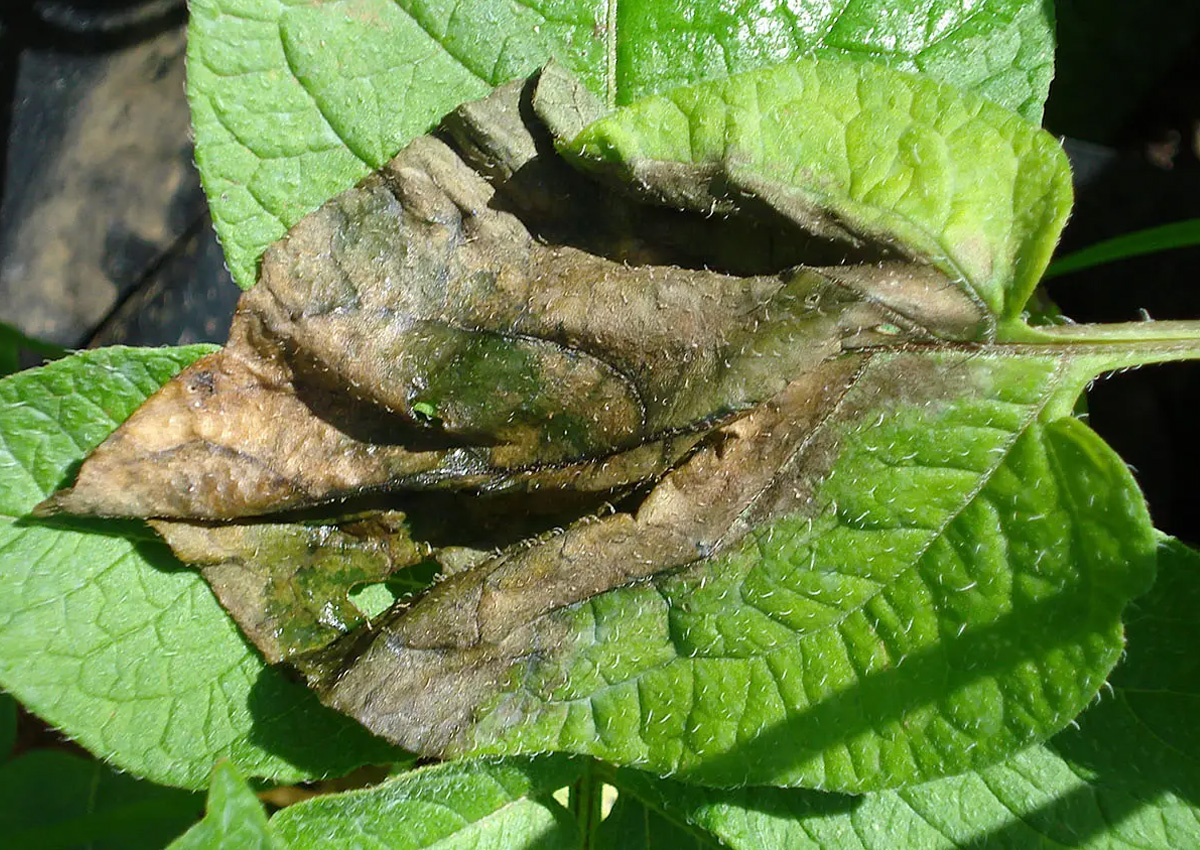
Study Shows Irish Potato Famine Pathogen Stoked Outbreaks on Six Continents
June 16, 2021| |
Researchers from North Carolina State University (NC State) continue to track the evolution of different strains of Phytophthora infestans, the plant pathogen that caused the Irish potato famine in the 1840s, which set down roots in the United States before attacking Europe.
NC State plant pathologists studied the genomes of about 140 pathogen samples – historic and modern – from 37 countries on six continents to track the evolution of different strains of P. infestans, a major cause of late-blight disease on potato and tomato plants. The study shows that the historic lineage called FAM-1 was found in nearly 73 percent of the samples and was found on all six continents.
In 1843, FAM-1 caused potato blight outbreaks in the United States, and two years later in Great Britain and Ireland. It was also found in historic samples from Colombia, suggesting a South American origin. FAM-1 survived for about 100 years in the United States but was then displaced by US-1, a different strain of the pathogen. US-1 is not a direct descendant of FAM-1 and was found in 27 percent of the samples. US-1 has since been elbowed out by more aggressive strains from Mexico.
For more details, read the article in NC State University News.
| |
You might also like:
- Research Identifies Best Gene to Provide Potatoes Resistance Against Late Blight
- Scientists Identify New Resistance Gene to Potato Disease that Caused Irish Famine
- Scientists Reveal Secrets of Potato Blight
Biotech Updates is a weekly newsletter of ISAAA, a not-for-profit organization. It is distributed for free to over 22,000 subscribers worldwide to inform them about the key developments in biosciences, especially in biotechnology. Your support will help us in our mission to feed the world with knowledge. You can help by donating as little as $10.
-
See more articles:
-
News from Around the World
- Could Gene Drive Protect Nature?
- Biotech a Tenable Solution to Addressing Hunger in Africa, Experts Say
- USDA Pushes Reform on Animal Biotech Regulations
- Study Shows Irish Potato Famine Pathogen Stoked Outbreaks on Six Continents
- Scientists Report a Plant Part in Arabidopsis for the First Time
- Genome of Little Known Disease Offers Hope for Citrus Plants
- Nicotinamide Can Protect Wheat from Fungal Attack, Study Shows
- Australia's Experience Highlights Importance of Regulations and Public Trust in Consumer Acceptance of Gene Editing
- Report Finds COVID-19 Pandemic Slowed Biotech Crop and Animal Approvals in the Philippines
-
Research Highlights
- Endogenous Promoters Induce Expression of Functional Genes in Soybean
-
Plant
- EMBRAPA Tackles Brazil's Regulatory Framework for Genome Editing
- Harmonized Regulations Key to Optimizing the Potential and Benefits of Gene Drive Technology
-
Read the latest: - Biotech Updates (December 17, 2025)
- Gene Editing Supplement (December 17, 2025)
- Gene Drive Supplement (February 22, 2023)
-
Subscribe to BU: - Share
- Tweet

